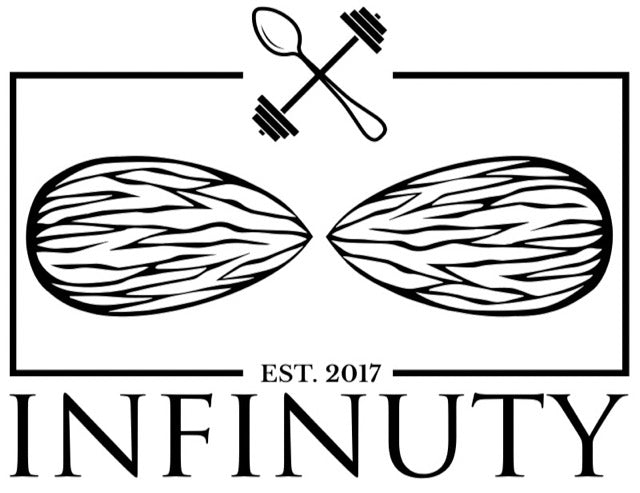Do you exercise, play active sports, spend whole days in the gym and still don't see results on your figure? The reason is usually the same - an improper diet.
It's not for nothing that they say that the first half of a figure is built in the gym, the second in the kitchen.
Whether your biggest hobby is classic gym workouts, cardio or strength training, CrossFit, functional training, or any other sport, a balanced diet is an integral part of progress. Of course, each of the above activities is different, which means that the diet for each of them will also be slightly different. While a strength athlete will have a slightly higher protein intake, an athlete who does more cardio training should consume more carbohydrates.
What is the ideal ratio of proteins, carbohydrates and fats in the diet?
As we mentioned above, there is no single formula. It all depends on the type of activity the athlete is doing. In this blog, we will focus on functional training, or rather CrossFit.
First, let's answer the question, what is CrossFit? CrossFit is a sport that has gained popularity among people over the past decade, mainly due to its variability and versatility. It is a form of functional training that aims to build strength, endurance, stability and explosiveness in a person, all in conjunction with weightlifting or gymnastic exercises.
And CrossFit founder Greg Glassman wrote simple but effective advice regarding nutrition in CrossFit and functional training:
EAT MEAT AND VEGETABLES, NUTS AND SEEDS, SOME FRUIT, LITTLE STARCH, AND NO SUGAR. KEEP INTAKE TO LEVELS THAT WILL SUPPORT EXERCISE BUT NOT BODY FAT."
Loosely translated, this means: "Eat meat and vegetables, nuts and seeds, the occasional fruit, some starch, and no sugar. Maintain a food intake that will support your exercise performance but will not create excess body fat."
The basis of the diet is therefore meat and vegetables, which represent proteins and carbohydrates, supplemented with nuts and seeds, which mostly represent fats. The ideal ratio is presented as 40-30-30 , which represents 40% carbohydrates, 30% proteins and 30% fats. Of course, this ratio can be slightly adjusted according to the specific person, their goals and needs.
Even more important than the ratio of macronutrients is their quantity, which depends primarily on a person's physical activity and weight.
How many calories should I consume per day?
As we mentioned earlier, it depends on your current weight, physical activity, and your goal. First, you need to define what physical activity you do, and also how often you do it.
A person with no or low physical activity - these are primarily people with sedentary jobs, without regular active movement.
Moderately active person - these are people who perform any physical activity at least 3 times a week.
Active person - a person who does sports at least 4 times a week
A very active person - an amateur or professional athlete who trains at least 7 hours a week.
Let's take a 90 kg man as an example:
In the first case, it is an inactive person with a sedentary job, who is not involved in sports and does almost no physical activity. His diet in this case should contain a daily intake of approximately 212g of carbohydrates, 160g of proteins and 72g of fats.
On the contrary, for a person with the same weight but significantly higher physical activity (for example, 4 times a week), the amount of macronutrients should be approximately as follows: 266g of carbohydrates, 200g of protein, and 88g of fat.
In general, the easiest way to keep your body in good shape is to follow a simple rule - calorie intake should be roughly equal to calorie expenditure.
If I am overweight and want to lose weight, I need to lower my calorie intake until I reach my desired weight.
On the contrary, if I am an active athlete, it is necessary to maintain sufficient caloric intake, because in the case of a caloric deficit, a person is not able to perform as required and this can result in unwanted loss of muscle mass or even injuries caused by nutrient deficiency or fatigue.
What are the most effective foods in an athlete's diet?
Protein - perhaps the best-known and most widespread source of protein is meat. The preferred types of meat are mainly beef, chicken, or turkey. Of course, if possible, it should be free-range meat. In addition to the nutritional and health benefits in the form of healthier food, there is also an ethical reason for this, as animals are treated more humanely. Another great source of protein is, for example, eggs or fish and seafood. Among the proteins of plant origin, it is worth mentioning, for example, tofu, tempeh, or legumes.
Carbohydrates - excellent sources of carbohydrates include whole grain foods (bread, pasta), selected vegetables (such as sweet potatoes, which have less starch than regular potatoes), fruits (bananas, berries, oranges), but also oatmeal or rice.
Fats - nuts and seeds are a great source of healthy fats. When we talk about nuts, we mean, in addition to the classic types such asalmonds , cashews , Brazil nuts, or pecans , also coconut and its oil , and peanuts . Avocado and olive oil are certainly worth mentioning as sources of plant-based fats, while classic butter or lard are excellent sources of animal-based fats. Despite the fact that all of these fats are considered healthy, it is necessary to pay attention to their intake, because just a few grams from any of the aforementioned sources can meet your daily required intake.
What foods should be avoided?
Sugar - as we mentioned above, a person should definitely avoid sugar in their diet. In this sense, sugar is meant as "added sugar", i.e. not the sugar that is contained in most fruits. The problem is mainly refined sugar, which is added to processed foods. It also concerns various types of syrups (glucose-fructose, corn, etc.), which are added to processed foods mainly because of their low price.
Regular consumption of foods high in sugar can cause not only excess weight but also a number of diseases associated with it - type 2 diabetes, cardiovascular disease, Alzheimer's and Parkinson's disease, osteoarthritis and cancer.
Final advice
We know very well that navigating such a vast topic as nutrition can sometimes be complicated. So try to remember the above-mentioned sentence about CrossFit nutrition as a guide. Always reach for fresh foods first in the store, and gradually avoid processed foods and convenience foods. And of course, occasionally treat yourself to something you really want. Food should be a source of energy as well as a pleasure, and you should never perceive your diet as a diet. Rather, it should be one that is sustainable for you in the long term.
------------------------
Author of the article:
Ivan Pózel - founder of INFINUTY, who has been actively involved in CrossFit for more than 12 years. Holder of CrossFit Level 1 and CrossFit Nutrition certificates. He tries to share his experience in the field of sports and healthy nutrition with the wider public.





